As shared in the article “Reuse of wastewater”. Reverse Osmosis membrane technology (RO) is ranked the best in the current wastewater treatment and circulation application.
Nội dung
1. Reverse Osmosis membrane RO in the wastewater reuse process
RO membrane is designed with super small filter holes, smaller than 0.0001 micron meters. With super small filter hole size, only water molecules are allowed to pass through the membrane, following the clean water channel to go out for reuse or discharge. Other polluting molecules such as dissolved solids, bacteria, viruses, COD, BOD, metals, … because of their physical size larger than the RO membrane filter hole size, will follow the concentration channel and be discharged together with the sludge.
Initially, RO membranes were widely used in the production of drinking water, clean water and seawater filtration for ships, navy, … Up to now, with continuous technological improvements, RO membranes have been widely applied in the field of wastewater treatment. Helping to solve many difficult problems in this field.
RO Membrane System Not only allows for effective and thorough wastewater treatment, but also helps to improve the quality of water after treatment for reuse or circulation for production and irrigation.
1.1 Outstanding advantages of RO membranes in water treatment.
The water after treatment is pure water, completely removing pollutants, residues, viruses and bacteria in the water, and will be completely circulated in different purposes of the factory: irrigation, sanitation, civil construction, fire protection, and in production stages that are not related to direct eating and drinking.
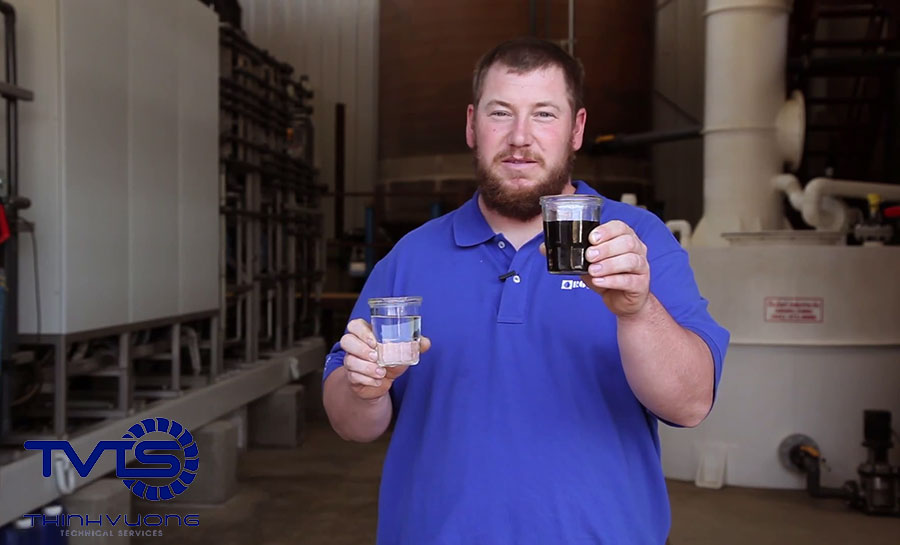
1.2 Disadvantages of using RO membrane system
- Requires experience in design and operation techniques.
- Higher investment costs and power consumption compared to other types of membranes.
- Easily clogged if not thoroughly knowledgeable about design and operation.
- Higher discharge rate, accounting for 10% to 40% of the input water.
RO membranes can be integrated into industrial, leachate, hazardous or civil wastewater treatment systems to reduce the pollution load. Thereby providing clean water for different uses.
1.3 TVTS uses TSRO membrane for industrial wastewater treatment to meet reuse standards
TSRO membrane module in the form of a buffer tube. It is an improvement from the module with a conventional spiral structure and a perfect combination with the open channel design. The TSRO module has the following advantages.
1.3.1 Advantages of TSRO membrane module
- The treated water meets the reuse standards.
- The ability to recover clean water is up to 95%.
- The treatment process completely removes color.
- No chemicals are used / Very little chemicals are used for the pre-treatment process.
- The membrane structure minimizes clogging.
- The technology has been proven effective worldwide.
- The total investment and operating costs are lower than traditional treatment systems with the same flow rate.
- The life of the membrane system is high.
- The treatment system is compact, flexible in installation location, does not require too large an area.
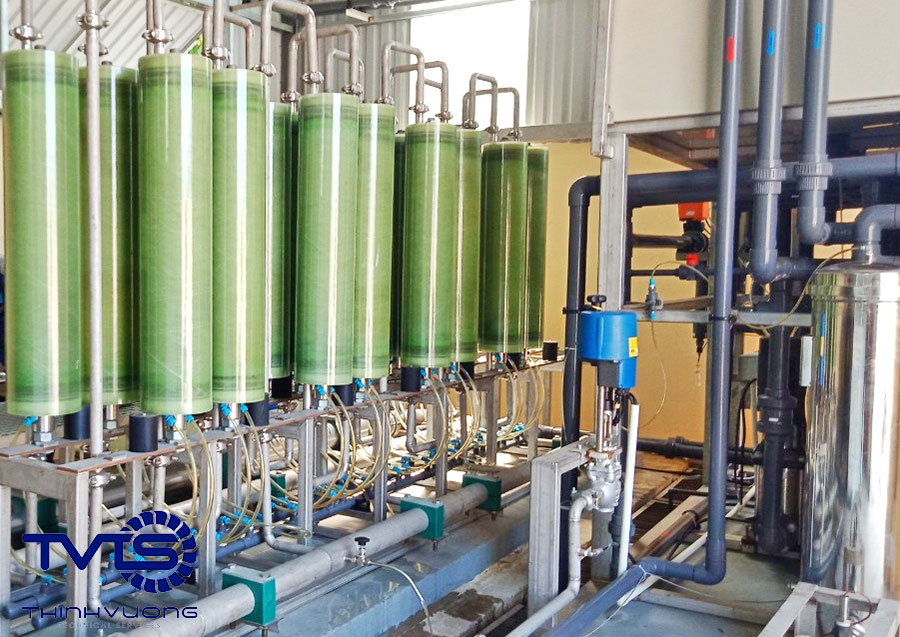
TSRO module is suitable for wastewater treatment for reuse needs. Some industries have effectively applied TSRO membrane water treatment systems.
1.3.2 Application of TSRO membrane module
- Reuse of wastewater from the textile and dyeing industry.
- Reuse of wastewater from the electroplating industry.
- Reuse of wastewater from the leather industry.
- Reuse of wastewater from the food and pharmaceutical industries.
- Reuse of wastewater from the electronic component manufacturing industry (hazardous wastewater).
- Waste-to-energy industry, waste treatment areas (leachate treatment).
- Reuse of industrial wastewater, industrial parks.
- Reuse of domestic wastewater, residential areas, urban areas.
- Reuse of agricultural and fishery wastewater. Livestock wastewater.
Besides RO membrane, some other membrane technologies are also widely applied in the reuse wastewater treatment process such as: UF, MF, NF membrane or MBR biological membrane (rarely used but used in the wastewater pretreatment process).
2. Ultrafiltration (UF) membrane
UF membrane (also known as ultrafiltration) is often used for purposes such as:
- Production of drinking water from surface water and groundwater.
- Production of water supply for the food and beverage manufacturing and processing industry.
- Some biotechnology industries.
- Treatment of wastewater with low pollution concentration.
UF membrane is highly effective in treating less polluted input water for production. And because UF membrane has large filter pore size, it is often used as a pre-filter for RO membrane system to remove suspended solids TSS, some viruses, metals… to increase RO membrane life and reduce membrane clogging during operation.
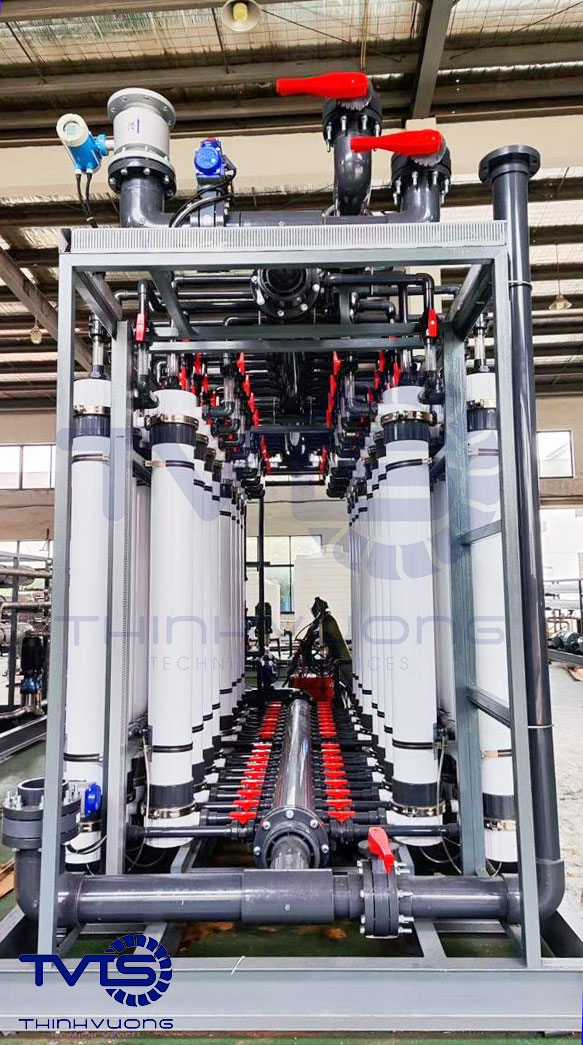
2.1 Advantages of UF membrane filter
+ UF is a mechanical filter membrane, so it will not change the properties of water too much.
+ UF has the ability to remove most of the insoluble and toxic solids in water.
+ The system is not bulky, does not require much space for installation.
+ UF membrane operation uses low pressure. Therefore, it consumes less energy, reducing operating costs.
2.2 Disadvantages of UF membrane filter
The input water of the UF membrane filter system requires good quality, and the output treatment only serves the basic purpose, because the filter hole size is large, so the ability to remove pollutants is not high. Often applied to projects to treat river water, surface water, water with low pollution properties, or as pre-treatment for NF/RO membrane systems.
3. Nanofiltration (NF) membrane
NF membrane is a membrane with filtering ability between RO and UF membranes. NF operates at a pressure range of 100 – 600 psi. It is often applied in fields and purposes such as:
- Fruit juice processing industry.
- Producing clean water for daily use.
- Serving the treatment of production water.
- Removing color from surface water.
- Removing hardness.
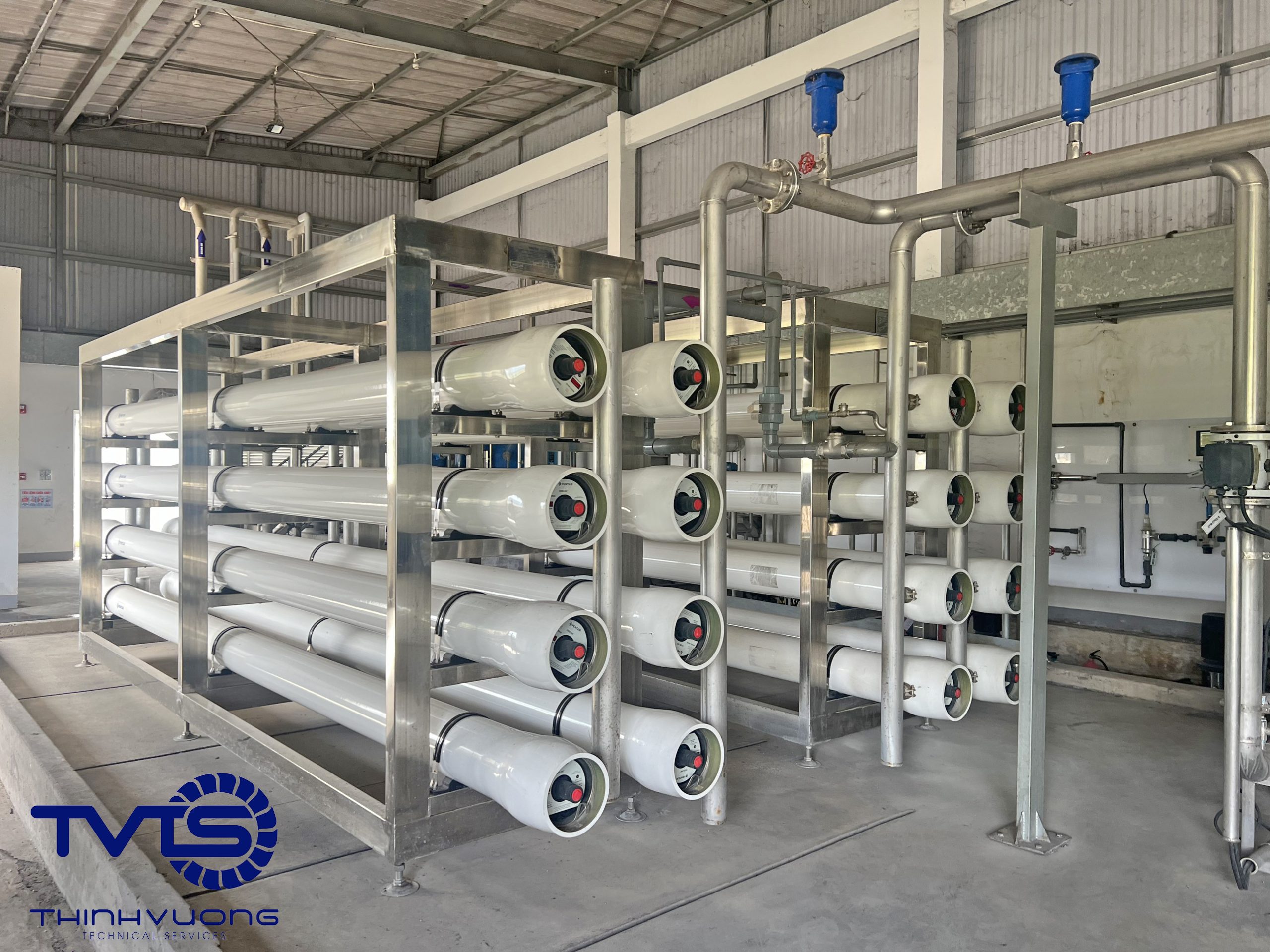
In case of wastewater treatment meeting reuse standards, it will be combined with some other treatment methods. Ensure that the input water of the NF system meets the standards of domestic water.
3.1 Advantages of Nanofiltration (NF) membrane
- Nano membrane operates at low pressure so it consumes less electricity. Saves operating costs compared to RO membrane.
- NF is a type of filter membrane with large filter holes, suitable for water with low pollution content, or as a pre-filter for RO membrane systems.
- Removes and reduces salt and dissolved substances in brackish water.
- Reduces heavy metal indexes, sulfate, nitrate, nitrite, color, etc.
- Highly effective when used to soften water.
3.2 Disadvantages of NF membrane
- High cost. Requires high water quality for the input of the filtration system.
- Low power consumption but still higher than UF membrane.
- Water needs to be dechlorinated before entering the NF filtration system. Because of the membrane’s sensitivity to chlorine.
4. Pretreatment process
Pretreatment is the preliminary wastewater treatment process. Using physical, chemical, biological methods to reduce the concentration of substances in wastewater to an acceptable level. Reaching the input limit for the main wastewater treatment technologies in the next wastewater treatment process.
Pretreatment can include the following methods:
- Physicochemical treatment.
- Coagulation, flocculation.
- Ozone.
- Chemical and microbiological methods.
5. Evaporator
In the field of wastewater reuse. Evaporator evaporators are often applied to wastewater with very high pollution concentrations. For the most effective evaporation, pure water is recovered and a super concentrated waste stream is created.
The waste stream after the evaporation system can be dried or buried in a landfill according to regulations.
6. Ion exchange
Widely used in water treatment or ultra-pure water production. Only used in wastewater reuse processes when the output water quality requires high purity.
Usually when mentioning ion exchange technology, we immediately think of this as water treatment technology. And that is true, because of its ability to treat water with low pollution concentrations to create ultra-pure water. Therefore, ion exchange technology is rarely used in wastewater reuse treatment.
Because to treat water needed for high-tech industries, the input water is tap water. New ion exchange technology brings high efficiency. In case of using recycled wastewater to become ultra-pure water, it is possible. But the investment and operating costs are too high.
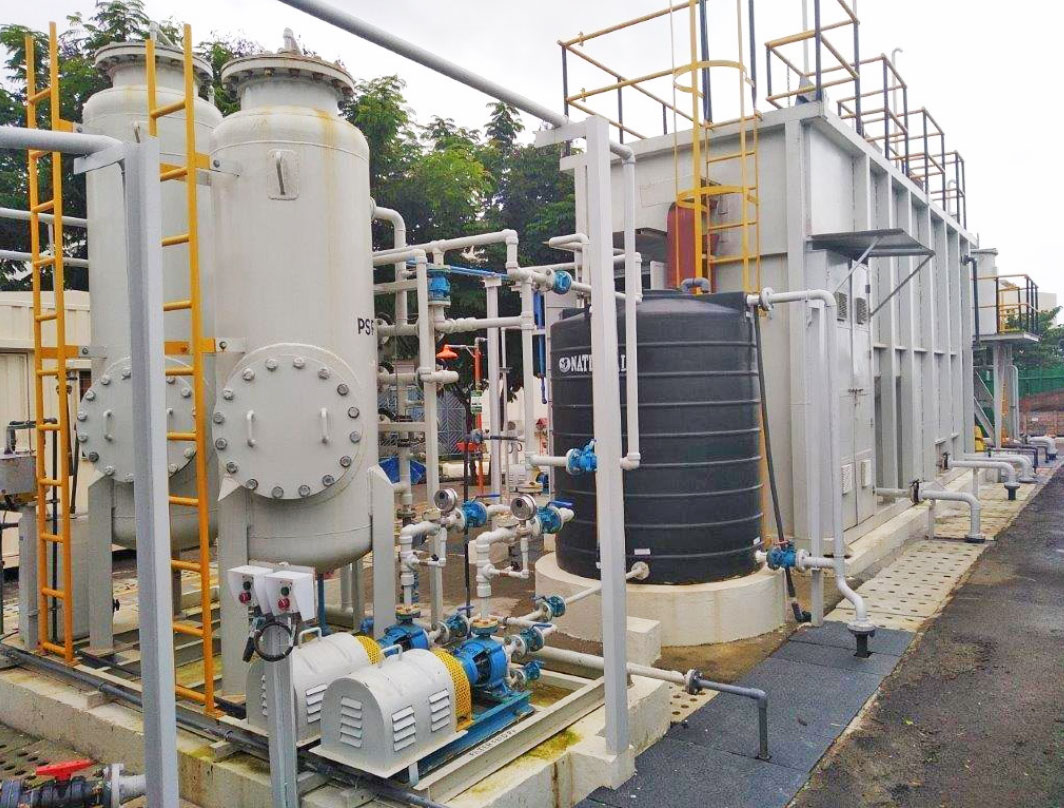
However, any water treatment technology has its own strengths. The job of technicians is to know how to apply them skillfully to get the best results.
TVTS consulted on ion exchange technology for a wastewater reuse project. The project needed to reuse wastewater in a textile dyeing factory. The third or fourth fabric wash water had a low concentration of pollutants, using ion exchange to remove hardness. The water quality after ion exchange met the standards to return to the normal fabric washing and cooking process.
Summary
The article provides basic information about wastewater treatment technologies that are being applied to the wastewater reuse technology process. We also provide some examples that have been applied in the projects we have implemented. Hopefully the article is really useful to readers.
If you need consulting support on solutions, techniques and wastewater treatment technologies. Please contact TVTS because we will support you completely free of charge. You will only pay when you decide to buy from us.



